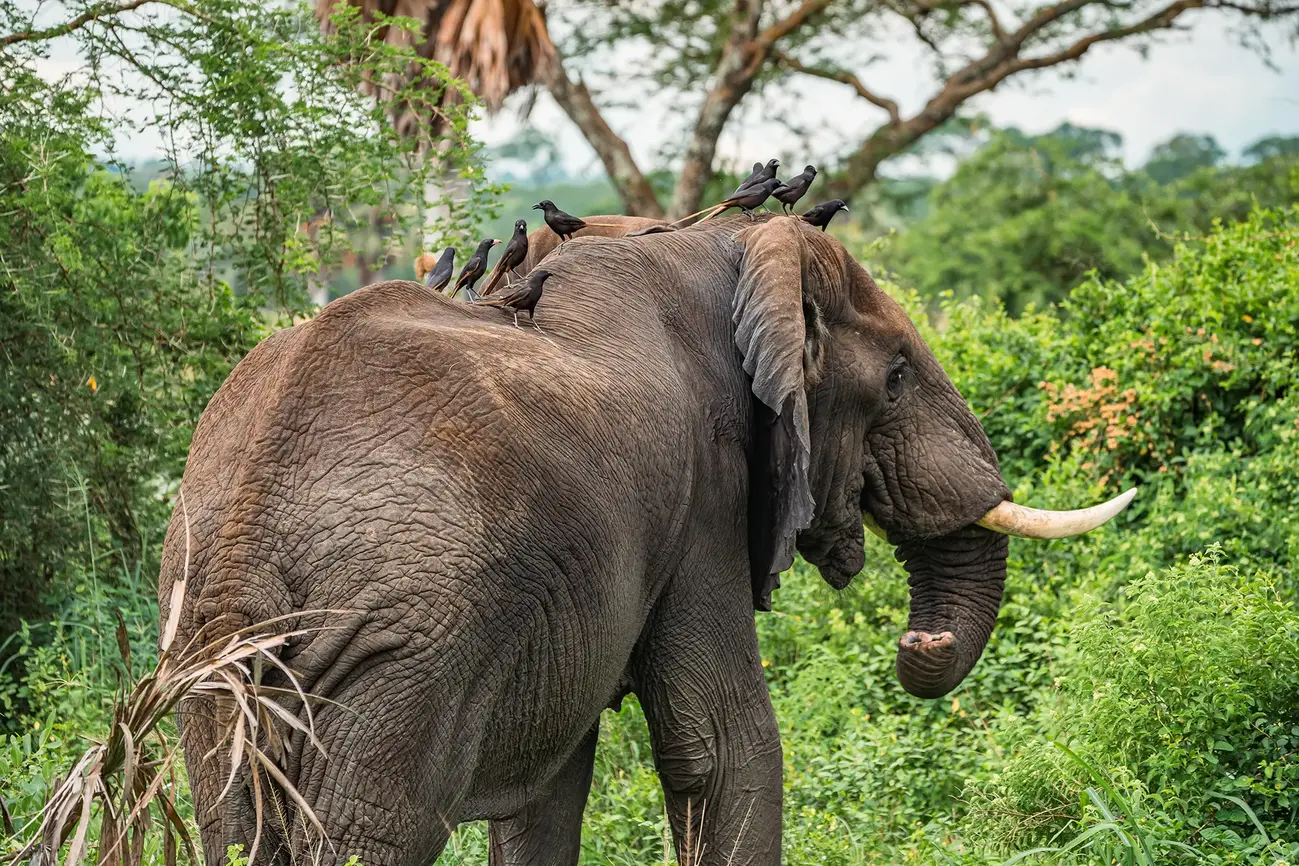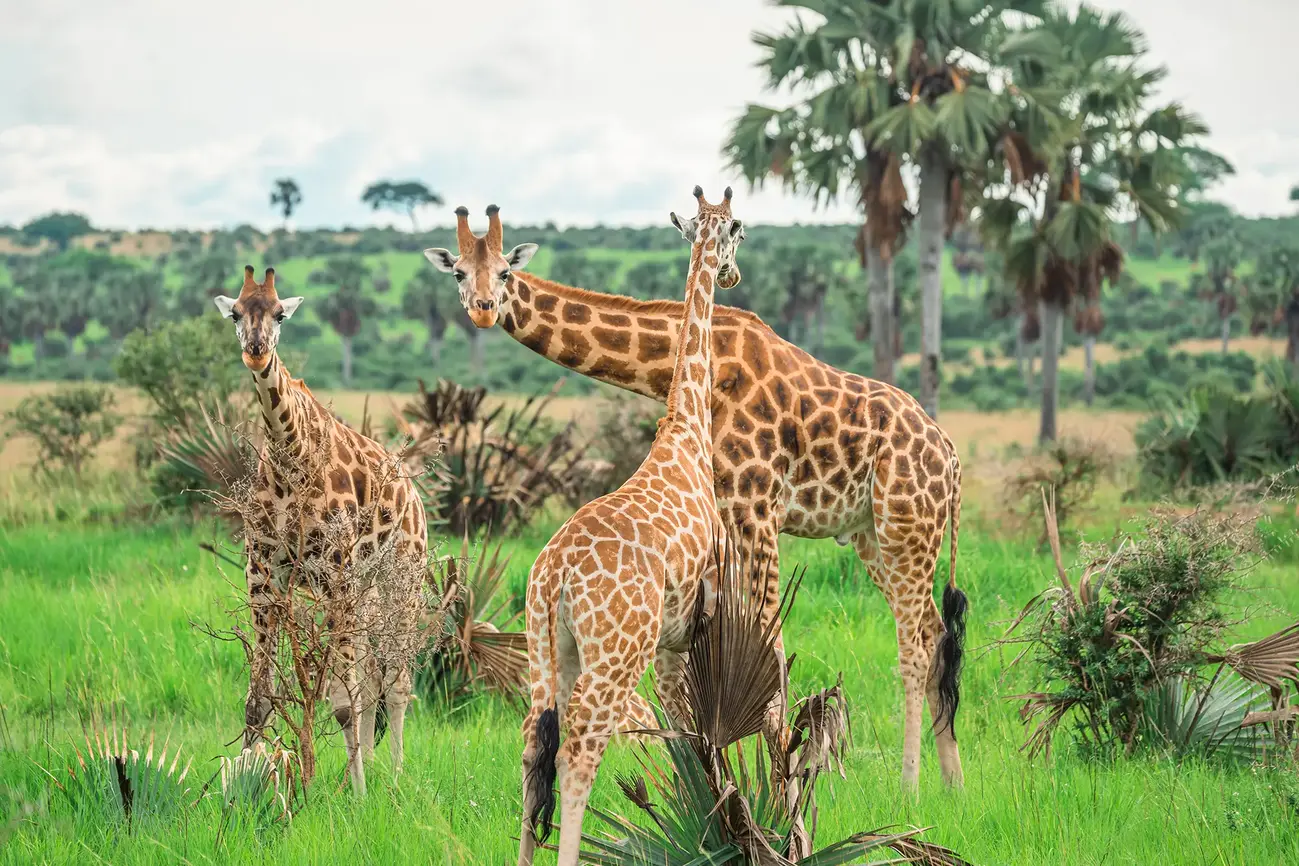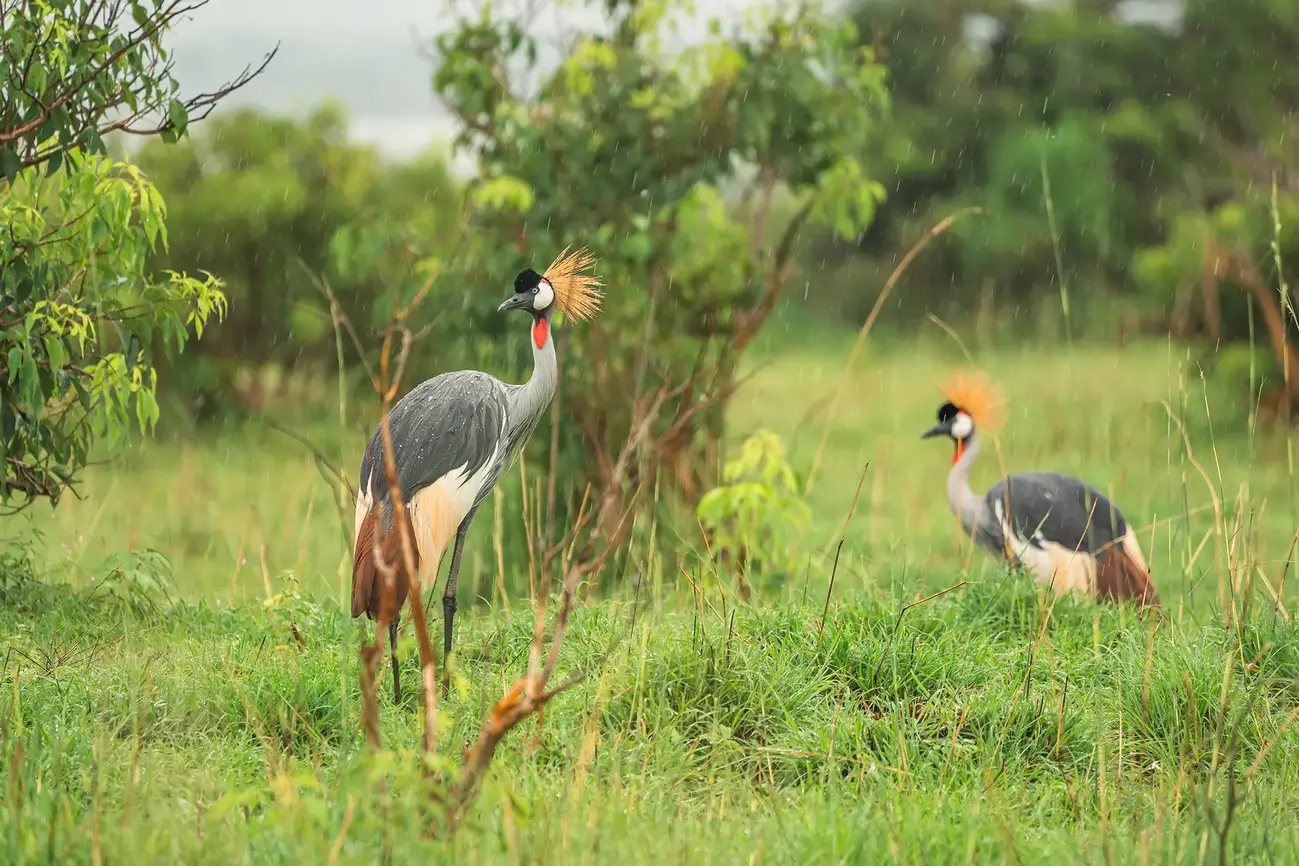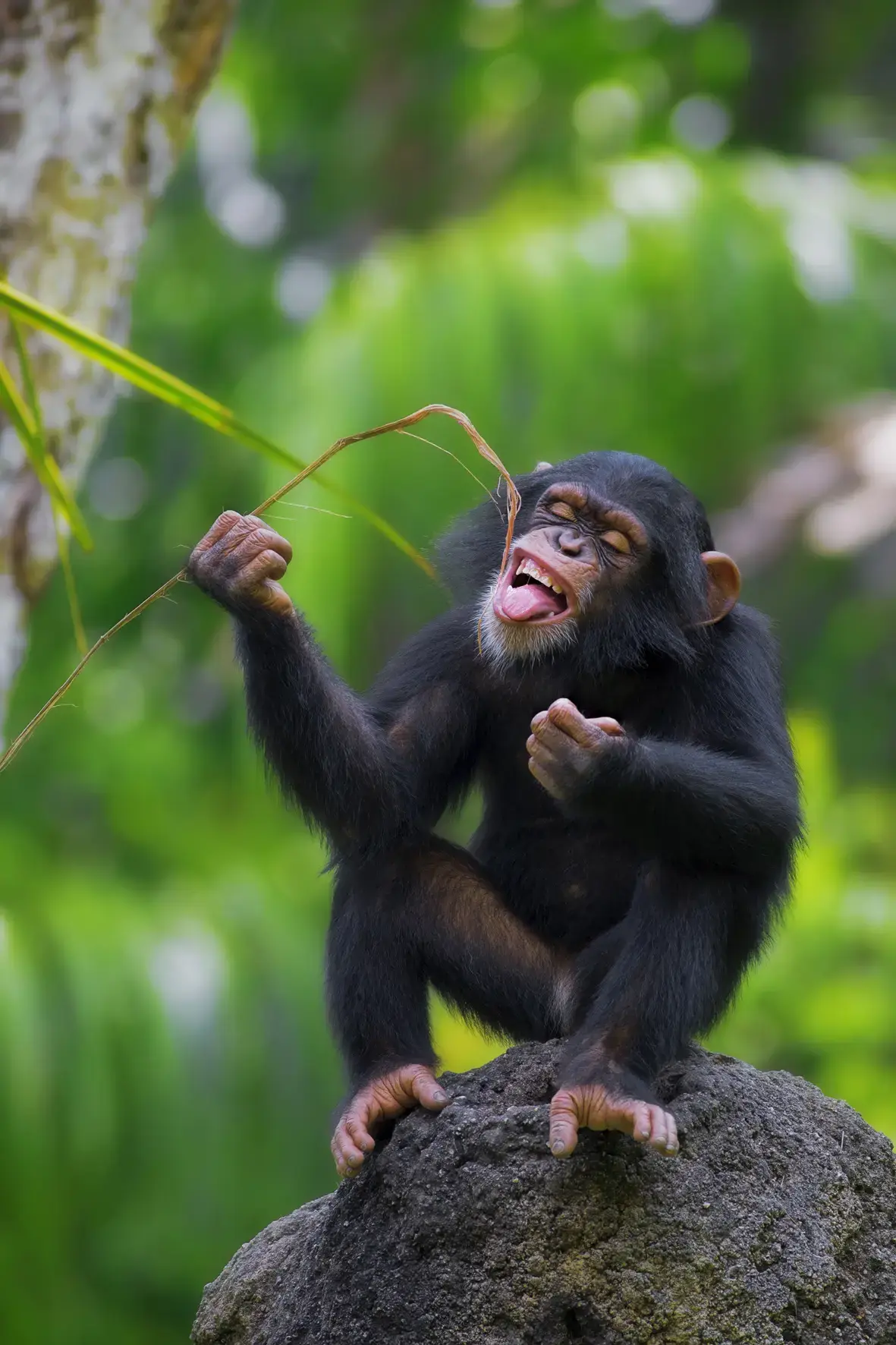The Albertine Rift is an area home to a number of endangered species, including African elephants, eastern chimpanzees and Nubian girafes. The region also hosts close to 450 different bird species, including Uganda's national bird — the gray crowned crane.
70% of the area’s natural habitat is protected The Tilenga Biodiversity Program is designed to address the impacts associated with the project, in line with the “Avoid, Reduce, Compensate” hierarchy, i.e. to avoid and reduce impacts as a matter of priority. The actions required to compensate these impacts aim to deliver positive outcomes for biodiversity and local communities — this is known as “net gain”.
The program is focused on four key ecosystems:
- Murchison Falls National Park
- Bugungu Wildlife Reserve
- Murchison Falls Albert Delta and the wetlands along the Lake Albert shoreline
- The Bugoma–Budongo Forest corridor
Goal: To leave the Murchison Falls Protected Area and the surrounding landscape in better condition than if the project had not taken place.

Pillar 1: The Murchison Falls National Park
Why are we taking action?
The human pressure on natural resources has lead to increased poaching and human-wildlife conflict issues in and around the park. This is also Uganda's largest national park, and is very important to the tourist industry.

Pillar 2: The Savanna
Why are we taking action?
Lions, elephants and other key species depend on different savanna habitats for survival. We want to help preserve the ecological value of these habitats

Pillar 3: The Wetlands
Why are we taking action?
The Murchison Falls Albert Delta Ramsar site and the fringe wetlands of Lake Albert are of social and cultural importance to the people of the area. They are also important spawning grounds for a variety of indigenous fish species, and over 450 known species of birds.

Pillar 4: The Forests
Why are we taking action?
The core forests of the Albertine Rift (the Bugoma and Budongo Central Forest Reserves) are critical for the survival of the eastern chimpanzee and are under threat from the large-scale cultivation of sugar cane and illegal activities such as poaching and pit sawing. They have also lost their connecting natural vegetation because of migration and progressive deforestation.